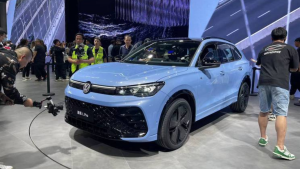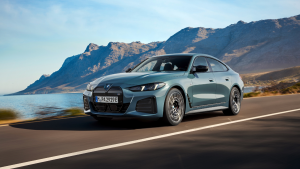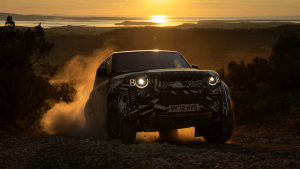Full Monte
Martin Alva
Published: August 26, 2011, 01:44 AM IST
Marcus stares at me intently and unlike most German utters in a hallowed soft tone "So you've made one of your pilgrimages today." It's 9 degrees below zero, the wind's picking up again, there's some snow on the fringes and I'm waiting for the cars on the Intercontinental Rally Challenge to come blazing through the Col De Turini. The Col is a pass in the Alps Maritimes just an hour's drive away from Monte Carlo. It is one of the best driving roads in the world but tonight it's a carnival spot to celebrate the centenary of the Monte Carlo rally.
Now I hate to tell Marcus that this isn't my pilgrimage, not in the least for an IRC event. The IRC incidentally is a breakaway series from the World Rally Championship whose aim is to make rallying more affordable and therefore accessible to teams with lesser budgets. It is slowly gaining importance yet is still not as important as the WRC or has as much of a following.
Marcus on the other hand is a pilgrim who has been making the pilgrimage to Monte Carlo, irrespective of the rally, since he was 18 years old. The first time he came here was on a 60cc motorcycle riding all the way from Germany and he's returned every year, though not on a motorcycle any longer. Marcus is over 45 years old and for the last 18 years he's been visiting the rally as a journalist. He's just one of several hundred people who come from all over Europe to converge at Monte Carlo in the month of January to witness one of the most extravagant and picturesque rallies in the history of rallying.
2011 marks the 100th year of the Monte Carlo rally though only 79 events have been held through this centenary. The first Monte Carlo rally held in 1911 was the very epitome of what a rally is defined as, a gathering of people who come from faraway places. Twenty-three competitors started off from various places around Europe heading to the Mediterranean, without a clue whether the rally ended in the principality. Neither was there a criteria to win. It was entirely ambiguous given that an international panel would decide who would win. Would it be the earliest to arrive or the fastest or the most elegant! And so began the rally with the most debates. In fact as recently as 1991, competitors began rallying from a starting point of their choice (actually 5 pre-selected points) which were roughly equidistant from Monte Carlo. Each of these routes presented a variety of challenges and since they weren't the same always this put a lot of strain on teams and especially tyre development. Now the rally starts around Valence and moves to Monte Carlo for the grand finale.
So what marks out the Monte Carlo rally as historic more than the numbers of times it has run are the controversies it has courted. Ever since it began in 1911, this event has been scarred by its myriad tangles and unscrupulous decisions. Yet time has only shown that the Monte Carlo rally despite all its peculiarities has provided some immense challenges that have resulted in heroes being established every year.
This year Bryan Bouffier along with co-driver Xavier Panseri were elevated to champion in their Peugeot 207, a choice much appreciated by the hordes of natives assembled on every stage. He is after all a local lad who knows the region well with several friends in the area to counsel him and the team on the weather and road conditions. It was this same counsel that saw him go out on studded snow tyres on day two of the rally when nearly everyone else got out on winter tyres. The information that stages ahead had snow on them elevated him from seventh position into a comfortable lead where he stayed for the rest of the rally, winning the season opener of the IRC 2011.
Bouffier will probably go down in history as the unlikeliest driver to win the 100th year of the Monte Carlo rally. Most were expecting Juho Hannien who trumped the 2008 season in the Skoda Fabia S2000 to strut his stuff at the Monte. Or rally legends Petter Solberg, Freddy Loix, Francois Delacour or Toni Gardemeister or even ex Formula One drivers turned rally stars Stephane Sarrazin and Alex Cafi, all legends in their own right. Unfortunately most of them had the wrong tyres when snow began to fall on the stages and never recovered from the time lost on those stages.
Snow and ice has indomitably been one of the severest challenges of the rally. The Monte Carlo rally is a tarmac rally but in this season the weather invariably turns worse and some of the stages such as the one run through Col De Turini, a high mountain pass in the Alpes Maritimes, make it one of the most spectacular stages of any rally in the world. Add the fact that the Monte Carlo rally is also one of very few rallies to run once the sun goes down and the difficulty is elevated immensely. This includes the Col De Turini, the rally starts sometime around 7 in the evening and after the drivers have negotiated the dozens of hairpins that are scattered throughout this stage they wind up in Monte Carlo well past midnight. This stage visited by nearly a thousand spectators is known as the 'Night of Turini' also popularly called the 'Night of the long knives'. The name arises from the beams of light that slice through the night as the cars pass through the mountain stage.
Interestingly as history recalls one of the most infamous decisions of all times in the Monte Carlo rally and perhaps the history of rallying revolved around the night stages. The 1960s were dominated by the Mini Cooper, these small cars came to Monte Carlo and wrecked havoc through the field with their nimble manners, compactness and determined drivetrains. But then in 1966, the organisers disqualified the British Motor Corporation Mini Cooper driven by Timo Makinen who won the rally as well as another Ford Lotus Cortina driven by Roger Clark into second place and two other Mini Coopers who finished third and fourth respectively. The official winner was announced as Pauli Toivonen, a Finn who lived in Paris and drove for Citroen. The officials' stand was that the disqualified cars used non-dipping single filament iodine bulbs in their headlamps instead of the standard double filament dipping glass bulbs fitted to series production versions of each model sold to the public. Doubts were raised on the credibility of the organisers. This was after all a French event and it was seen as the French favouring their home manufacturers.
Why this is important is because the Monte Carlo rally had become a critical testing ground for manufacturers. The diversity of the stages and the distances covered meant that automobile manufacturers could use the rally as a proving ground to develop technologies for the future. As the cars got more exotic with several being developed specifically for the Monte Carlo rally, the controversies got thicker and yet participation kept increasing. After the Second World War, participation reached frenzied heights. In 1951 362 crews participated and that number increased to 440 crews in 1954. So if you had to stand at the Col De Turini and watch the drivers go by you'd be standing in the cold for over six hours waiting from the first to the last car to pass. Why is this a bitch? Because if you happen to park in the wrong spot somewhere inside the stage you wouldn't be able to drive off for at least six hours.
Thankfully we had Marcus with us who knew where to park both car and ourselves at the Col. Heading to one of the few restaurants on the top of the pass, we were inundated by the crowds of rally enthusiasts of all ages inside the restaurant. Everyone was sipping a cuppa and right there amidst all the noise emerged one of the greatest rally drivers of all time, Ari Vatanen. And that is part of what makes Monte Carlo so thrilling. You never know who you're going to run into. But the Monte Carlo rally is also thrilling because people have never known what to expect, be it on part of the participants or the organisers. Towards the end of the fifties lots of heated exchanges were seen centred around the use of secret control sections. Teams cheated by sending out reconnaissance crews in advance to discover the location of these controls. Obviously lots of heat was generated in the cold climes. But then neither were the organisers sanctimonious, stage times were subjected to a coefficient that varied from car to car and therefore was always imperfect. So some years the rules favoured small cars most of which were French until the Mini Coopers began their reign. This led up to the headlight incident but thereon things improved and the operations became more professional. Yet the headlight incident left deep wounds even within the Citroen team who benefited the most, rising up from fifth to first position. Pauli Toivonen felt deep regret over the incident and never celebrated the win, and it was only when his son Henri won the Monte Carlo rally in 1986, he said that the stain had been cleansed from the family name.
Ever since then the Monte Carlo rally has gained precedence as one of the foremost rallies in the world, even though it's no longer a part of the World Rally Championship and now runs the IRC. That change came about in 2009. The numerous regulations imposed by the FIA and the control it exerted over the format irked the officials of the Automobile Club de Monaco. They weren't in favour of the championship rotation system and with the arrival of the new WRC era which saw a full FIA event and a separate one for privateers, the organisers were pushed harder against the wall. Commitments to promoters of the event and an even less spectator friendly rally meant things were getting strained to the limit. With most of the rally centred around the harbour area at Monte Carlo, crowd control and traffic congestion in these areas also became a nightmare to contend with. And in 2007 when it was decided to simply hold the rally in the Valence region and bring it down to Monaco for the grand finale, most of the WRC teams objected. Year 2008 was the last the AMC ran the Monte Carlo rally under the aegis of the FIA as a WRC event. The organisers and promoters had had enough and switched their loyalties to the IRC which was far more lenient and accommodating. This also meant the Monte Carlo rally was able to go back to the Ardeche region which was how it was run traditionally.

This year thanks to it being the centenary the turnout is spectacular though the organisers were expecting several more spectators. There are 121 entries with some 33 cars in the Super 2000 class and the rest full of privateers running everything from Renault Clios to Suzuki Swifts and even Abarth 500s, talk about celebrating a motorsport event. At the Turini the sights however are still amazing at least for me since I've come here for the first time. The scene at the Col de Turini is carnival-like with well over a thousand people assembled, fog horns, fireworks, flares, a full platoon of drummers and tipsy spectators who've had a bit too much to keep warm in the freezing cold. Surreal! I stay for a few hours in the biting cold, grateful that the morning was spent purchasing very warm snow boots and gloves. After the leaders and then some of the showboat-ers pass, we drive further on to the twilight zone. This is the 'night of the long knives', the Col was brightly lit and most of the spectators were jammed alongside the 100-metre stretch. Here at the next stage there were another thousand spread over a 3-kilometre section of which we had a perfect view. Hairpin after hairpin, connected by short undulating sections shimmered under very dull moonlight. And small pockets of people bundled themselves over bonfires spread every 10 metres or so. Shadows danced in the firelight in celebration of the centenary and then came the cars. We couldn't hear them initially because they came towards us from the other side of the mountain muting the roar of their exhausts. But once they came into sight you instantly knew that the knives were furiously at work slicing the thick blackness of night spread over those treacherous mountain roads, up, down though mostly sideways.
110 years of Skoda Motorsport
Vaclav Klement and Vaclav Laurin who started off as bicycle manufacturers developed a new motorcycle which made its debut in 1899 under the banner of Laurin & Klement Co. By 1900 the duo was already preparing motorcycles which were used to race, subsequently notching up several victories in international events. In 1924 L&K were aquired by Skoda Works, an arms manufacturer and Czechoslovakia's biggest company with diverse business interests.
Skoda's true claim to motorsport fame however came in the 1960s when it entered the world rallying stage with the Octavia. From there on Skoda found its calling, rallying several cars which were not as technologically advanced as the competition but highly reliable. With several victories under its belt Skoda Motorsport stepped into the World Rally Championship in 1998.
From 1999 to 2005 Skoda participated in the WRC as a works team with little success. At the end of the 2005 season Skoda dropped out of the WRC, returning to rallying only in 2008 in the IRC with a Super 2000 Fabia. In 2010 Skoda Motorsport won the manufacturer's championship with Juho Hanninen claiming the driver's title.
Price (Ex-Delhi)
Starts Rs 38 Lakhs
Starts Rs 38 Lakhs
Displacement
1998cc
1998cc
Transmission
Automatic
Automatic
Max Power(ps)
192
192
Max Torque(Nm)
320
320
Mileage
15.81 Kmpl
15.81 Kmpl
Related Stories
Advertisement
Advertisement
Top Stories
Advertisement
Latest Videos
Most Popular
- Budget Sportbike Showdown: Kawasaki Ninja 500 vs Aprilia RS 457 vs Yamaha YZF-R3
- 2014 Triumph Daytona 675 vs 2024 Kawasaki ZX6R - A Decade of Evolution in Supersport Motorcycles
- Mumbai-Pune Expressway speed restrictions updated
- Nissan Magnite EZ-Shift review - is the AMT any good?
- Nitin Gadkari states that tax on Hybrids should be reduced to 12 percent in the coming future
Advertisement
Network18 Updates
Compare











